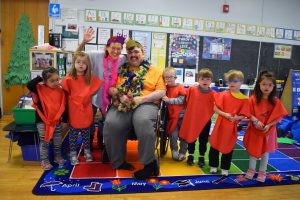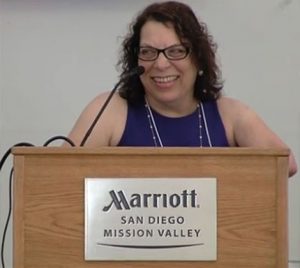“What have you accomplished?” This sardonic question asked by non-disabled people seems to sum up a lifetime of exploration and endurance. This is the only community that still, in our day and age, struggles. This community of cerebral palsy folks, in all its multivariate modalities, lives and moves and has its existence haunted and prodded by this question, and by experts in the field, who are educated but who honestly don’t know how to deal with us or help us. This happens, no matter how hard we work or what hurdles we jump. We continue to stay the course, to look beyond this kind of thinking, and to get ahead by listening to our hearts so we can thrive.
For an impetuous, strong, black-haired soul from New Jersey, and for a beautiful sage from California, our achievements in a dozen different areas have been hidden. These include creating chair aerobics in 1975, and winning the first civil rights case for her own college education, thus opening the doors to higher education for disabled people. These brave and courageous acts were often accomplished against overwhelming odds. We both believe each one of our readers can do it—each in their own way facing their individual issues.
Even though these two minds were spurred on with commitment, grace, fortitude, wonder, hard work and much effort, their daring, gallant efforts are now out of sight and concealed—for no one to see.
Her physical strength, acquired through dance and therapy; his, by crawling up stairs and walking through woods—both once thought impossible, and yet took place. This young girl, devoting every spare moment of her time to dancing, swimming, and building up her body and her self-worth over many hours. The eastern black-haired soul, reading everything from Rand to root beer ads, under the cover of a mathematics book, finding strength in the fiery words of politicians, sages, and the leaders of his people, scorned by power-drunk white-coated gurus who demanded to decide everything from meals to morality, and what we should do with our lives. Not one positive phrase, not one kind word or act of encouragement to let these two brave souls know that they were on the right course.
They had been brought together by a longing to discover how they could give physical form to the burning in their souls, the longing to use whatever talents they had invested decades to discover, to empower each other. The young man, dismissed by those who thought they knew better—he set his heart free and created a physical education program under the guidance of his physical therapist—who poured his very spirit into every exercise, and into every weight lifting machines session—to get his client with the black hair strong enough to turn himself over alone, and to help motivate him to stretch and make his upper torso strong.
While each made real progress in body and spirit alike, they both had to stay the course, encouraging and nurturing themselves to make whatever they did possible. It was their “I can do anything, too, attitude,” that made all this possible.

Sean with Paper Mill Playhouse’s Leslie Fanelli and Students
Sean P. Dineen is an Adjunct Professor of History at Kean University and an expert on the history of disabilities and disability rights. He is a native of New Jersey. A published playwright, his personal interests include theatre and popular culture.

Karen keynoting at a recent conference
Karen Lynn-Chlup has been an advocate for people with disabilities since she was a small child. Karen was a pioneering leader in the disability rights movement, and she spoke up for the rights of people with disabilities when others did not. Karen inspires people living with a disability to accept themselves unconditionally and to learn to push through barriers, to take on more than they thought they could, to imagine reaching for higher levels and goals, to become inspired by how others have reached their dreams, to learn to inspire themselves, and to never give up.
